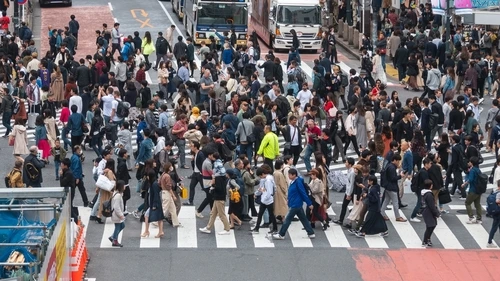
Different authorities define their cities in entirely incompatible ways, rendering any attempt to compare the largest cities in the world a bit like comparing apples to trucks. You need a single source that follows a single set of rules: the results may not be perfect, but at least they’ll be consistent.

That’s where Demographia comes in. The St. Louis-based consultancy was founded by the urban planner Wendell Cox (who, unusually for someone in that line of work, likes to write articles for conservative publications about the benefits of private car ownership). It also has a website that is, with the best will in the world, not massively easy on the eye.
But Demographia publishes something rather good every year: the World Urban Areas Report, a sort of bumper book of city population stats.
Here’s how it defines a city:
An urban area (“built-up urban area,” urbanized area or urban agglomeration) is a continuously built up land mass of urban development that is within a labor market (metropolitan area or metropolitan region). An urban area contains no rural land… [It] is best thought of as the “urban footprint” – the lighted area that can be observed from an airplane (or satellite) on a clear night.
This year’s edition of the World Urban Areas Report covers a thousand of the largest cities in the world, from first-place Tokyo-Yokohama (pop. 37.7 million), right down to tiddlers like 989th-ranked Leicester (Pop. 500,000): all cities, in fact, with a population of half a million of more.
Here are the top 20: (Asia’s dominance lessens as you move down the league table)
- Tokyo-Yokohama – 37,732,000
- Jakarta – 33,756,000
- Delhi – 32,226,000
- Guangzhou-Foshan – 26,940,000
- Mumbai – 24,973,000
- Manila – 24,922,000
- Shanghai – 24,073,000
- Sao Paulo – 23,086,000
- Seoul-Incheon – 23,016,000
- Mexico City – 21,804,000
- New York – 21,509,000
- Cairo – 20,296,000
- Dhaka – 18,627,000
- Beijing – 18,522,000
- Kolkata – 18,502,000
- Bangkok – 18,007,000
- Shenzhen – 17,619,000
- Moscow – 17,332,000
- Buenos Aires – 16,710,000
- Lagos – 16,637,000
The world’s largest continent, in fact, is home to 13 of the world’s 20 largest cities.
This isn’t quite as extreme a result as it may appear: Asia, after all, is home to just shy of 60% of the world’s population. So the way in which the billions of people who live in cities of half a million souls or more are distributed around the globe is largely a function of where people actually live.
After all, the Americas and Australia are unusually urbanised, Africa unusually under-urbanised, and Europe and Asia are pretty close to what you’d expect. Plus, some cities have a significantly larger urban sprawl when it comes to the area.
There are two other striking things about these league tables.
China's largest cities
The first is the dominance of China, which takes four places in the top 20.
Again, this shouldn't be surprising – it's the world's most populous country, home to nearly a fifth of humanity – but nonetheless, it's striking how many of these megacities you almost certainly haven't heard of.
Where the power lies for the world's largest cities
The other striking thing is how far down the league tables many of the world's most influential cities fall. Here's where some places make the “world city” league tables: London in 36th, Paris just behind in 37th, Toronto 68th and Madrid in 77th.
Size, it seems, isn't everything.
[Read more: Where are the largest cities in Britain?]






